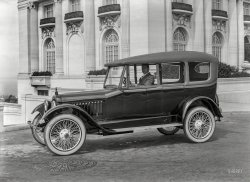
MAY CONTAIN NUTS

Search Shorpy
SHORPY ART

Framed or unframed, desk size to sofa size, printed by us in Arizona and Alabama since 2007. Explore now.
Join and Share
Ad-Free Shorpy
Shorpy is funded by you. Patreon contributors get an ad-free experience.
Learn more.

Recent comments
- Baldwin 62303
- Baldwin VO-1000
- Cold
- No expense spared
- Tough Guys
- Lost in Toyland
- And without gloves
- If I were a blindfolded time traveler
- Smoke Consumer Also Cooks
- Oh that stove!
- Possibly still there?
- What?!?
- $100 Reward
- Freeze Frame
- Texas Flyer wanted
- Just a Year Too Soon
- WWII -- Replacing men with women at the railroad crossing.
- Yes, Icing
- You kids drive me nuts!
- NOT An Easy Job
- I wonder
- Just add window boxes
- Icing Platform?
- Indiana Harbor Belt abides
- Freezing haze
- Corrections (for those who care)
- C&NW at Nelson
- Fallen Flags
- A dangerous job made worse
- Water Stop
Member Photos
The Shorpy
Print Emporium
Print Emporium
Search Shorpy
Search results -- 30 results per page
- Chalmers Castle: 1937
- 1937. Charleston, South Carolina. "Old Armory, 8 Chalmers Street. Original structure dates to 1851. Deutschen Feuer Kompagnie ... Market" by the time this picture was taken.
1872 "Chalmers Castle," as Dave strikingly calls this building, has been designed by ... Posted by Dave - 03/26/2014 - 7:09pm -
![Chalmers Castle: 1937 1937. Charleston, South Carolina. "Old Armory, 8 Chalmers Street. Original structure dates to 1851. Deutschen Feuer Kompagnie until merged with city fire department, then Engine House No. 1 by 1881; Carolina Light Infantry armory until 1907; then Good Samaritan Hall and Embry Mission. Abuts Old Slave Market." 8x10 acetate negative by Frances Benjamin Johnston. View full size.
Of course it's still thereThey don't tend to demolish old buildings in Charleston.
[Maybe they don't demolish, but they do decrenellate. -Dave]
Decrenellate indeedI suspect the architecture took a back seat to safety, given the massive crack already in it by 1937. Or it decrenallated itself.
I confessI had to look it up. That's why I haunt Shorpy--to learn stuff.
Gas fixtureIs that what the metal hooked pipe over the front door is?
What is it used for today?
Slave marketThe bldg. to the immediate right of Charmers Castle seems to read "Old Slave Market". Am I reading that correctly?
[Now try the caption. -tterrace]
Slave marketYes that's an Old Slave Market. It's now a museum. Technically it was an auction house that sold anything that came off a ship including slaves. It was renamed "Old Slave Market" by the time this picture was taken.
1872"Chalmers Castle," as Dave strikingly calls this building, has been designed by Architect Edward C. Jones, read more about the Charleston Historic and Former Firehouses.
As the structure dates to 1851, I wonder why 1872 is the date that is to be seen on the building. I cannot relate the year to the years mentioned in the caption (by Frances Benjamin Johnston, I suppose) either.
Apart from that, I tried to find out what sign and text are written on the gable, they are perhaps related to the year 1872?
But, as the picture is taken in 1937, I suppose they all have something to do with the African American charitable organizations "Good Samaritan Hall" or the "Embry Mission," who were the most recent users of the building until then.
(The Gallery, Charleston, F.B. Johnston)](https://www.shorpy.com/files/images/SHORPY_03394a.thumbnail.jpg)
- Automobile Row: 1918
- San Francisco circa 1918. "Chalmers Model 6-30 roadster facing N.W. corner Van Ness Avenue and Sutter ... with the two tone paint and wire wheels is just past the Chalmers?
Upstaged Lots to love in this shot. Well-dressed businessman ... like a 1918 or 1919 Stutz Bearcat or Bearcat S.
1917 Chalmers Speedster A sporty little rig indeed! Especially for 1917.
Re: ... Posted by Dave - 05/14/2016 - 12:52pm -
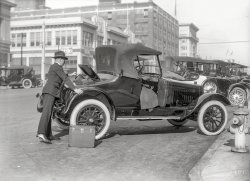
- The Auto Show: 1917
- ... D.C., auto show. March 3-10, 1917." A display of Chalmers and National cars. National Photo Co. Collection glass negative. ... Garage The first person who lived in my house bought a Chalmers in 1917 from the Union Garage, which started as a place where the ... Posted by Dave - 09/12/2011 - 12:05pm -
![The Auto Show: 1917 "Washington, D.C., auto show. March 3-10, 1917." A display of Chalmers and National cars. National Photo Co. Collection glass negative. View full size.
Big cars in D.C.In these pictures of Washington, one thing that stands out to my eyes is the preponderance of BIG and expensive cars. Caddies, Packards, Pierces. Very few Fords in sight. In contemporary pics from other cities, even prosperous oil towns in Oklahoma, the only cars visible are Ford T's with perhaps an occasional Dodge.
Auto Shows Auto shows prior to WWII were a different venue than we've gotten used to in these past 60 years. Because there were very few purpose-built exhibit halls anywhere in the country, auto shows were usually held in industrial loft buildings similar to the one shown in the photo. Consequently, exhibit promoters had to do their best to turn a sow's ear into a silk purse with the sort of decorations shown. On very rare occasions, well-connected promoters could wangle permission to use a high ceilinged downtown armory.
[The Washington Automobile Show was held on the third and fourth floors of the Union Building downtown. There was an orchestra and dancing. - Dave]
Union GarageThe first person who lived in my house bought a Chalmers in 1917 from the Union Garage, which started as a place where the smaller automakers could get together to sell their cars and not have to spend big bucks on building their own showrooms. I believe that Ford used space there. The Union Garage as such didn't last long, though the building was still standing in the 60's. Today, the lot is covered by the Verizon Center. The Army Air Corps used part of the building during WWI, but moved out quickly as the air was too foul from all the exhaust.
[Below, the Union Garage in 1915. In July 1917 the building was taken over by Semmes Motor Co., which sold Dodge and Hudson cars as well as Wilcox and Vim trucks. - Dave]
Granny's ChalmersI once asked my paternal grandmother what the first car she remembered riding in was and she told me it was her father's 1917 Chalmers! My great-grandfather was a well-to-do man in a small town in North Carolina. (He distilled and bottled legal liquor). My grandmother told me that a salesman brought the car out to their house and sold it to him and someone came out to pick up the salesman. She said that eventually her older brother, Sanford, "destroyed the thing and drove it right off its frame!"
Spoken ForInteresting that both these cars have a sign on the windshield stating that they've already been sold. Wonder if this is the same Chalmers that manufactured tractors under the 'Allison Chalmers' name?
[You're thinking of Allis-Chalmers. - Dave]
(The Gallery, Cars, Trucks, Buses, D.C., Natl Photo)](https://www.shorpy.com/files/images/30747u.thumbnail.jpg)
- Miss Maxwell: 1922
- San Francisco circa 1922. "Misses Maxwell and Chalmers." Carrying (or wearing) the banner for two car brands not long for ... negative. View full size.
I'll take Miss Chalmers ... She's the bee's knees. Oh, you kid!
Hot fashion Those ... Posted by Dave - 11/16/2015 - 1:08pm -
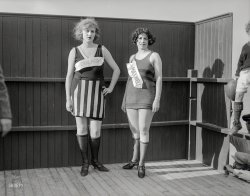
- Nomobile: 1920
- ... and fire refugee tents (click to enlarge).
Chalmers? Windshield looks like this earlier Shorpy photo found here .
... Posted by Dave - 11/18/2017 - 11:59pm -
![Nomobile: 1920 UPDATE: Resident pantomath tterrace puts us at Jefferson Square Park, while Shorpy member 426hemi identifies the car as a 1922 Winton Six Model 40. Well done!
The place: San Francisco circa 1920. The tires: Goodrich Silvertown Cords. That's about all we can say about this 5x7 glass plate, whose negative sleeve is devoid of any caption information. We leave it to you to fill in the blanks. View full size.
Maybe Winton, but which model.This car has been the subject of discussion on the aaca forum pages. It would seem to be a Winton but the car in the picture submitted by 426hemi is larger. It has 34 hood louvres vs 30 on the mystery car. Note also the hood is obviously longer as you can see the second handle. I have several references which mention Winton and none agree re which model is which and in which years there were two wheelbase lengths.
[The photo below of a Winton Six, model unknown, was added by me. Comparing it to the large photo proves nothing, other than to show that both cars are Winton Sixes. - Dave]
Jefferson SquareThis is at Jefferson Square Park, previously seen here, in which you can see the Fortmann Mansion, used as the McKittrick Hotel in "Vertigo." Below, the imposing edifice farther up Eddy St. in the current shot is seen in this 1906 photo when the park was filled with post-earthquake and fire refugee tents (click to enlarge).
Chalmers?Windshield looks like this earlier Shorpy photo found here.
[Both vehicles are open touring cars with "California tops" -- aftermarket accessories that would be poor clues as to the make of the car. - Dave]
Vehicle isA Paige.
[A Paige of this vintage would have angled hood louvers, as well as the word PAIGE on the hubcaps. So keep guessing. A good clue might be the "mouse hole" lubrication port over the running board. - Dave]
No Photographer?Interesting! For an almost straight-on photo there is not a reflection of the photographer.
I'm 99% sure that this vehicle isa 1922 Winton Six Model 40 Touring Car.
[Ding ding ding! I think we have a winner! - Dave]
Just a guessAustin?
(The Gallery, Cars, Trucks, Buses, Chris Helin, Dogs, San Francisco)](https://www.shorpy.com/files/images/SHORPY-1242.thumbnail.jpg)
- A Tattered Tire: 1922
- Circa 1922 in San Francisco, this aging Chalmers touring car needs a new shoe. Since we're at the Maxwell-Chalmers dealer, why not take a look at the new models? 6½ x 8½ glass plate ... Posted by Dave - 11/28/2014 - 12:23am -
![A Tattered Tire: 1922 Circa 1922 in San Francisco, this aging Chalmers touring car needs a new shoe. Since we're at the Maxwell-Chalmers dealer, why not take a look at the new models? 6½ x 8½ glass plate from the Wyland Stanley collection. View full size.
Maxwell is still with usMaxwell-Chalmers was having a roller-coaster year in '22, sales had been growing fast but bad word-of-mouth from some less than rigorous engineering, cash flow issues from the Chalmers merger, and the '21 recession all worked together to put the company in deep doo-doo.
Thankfully the board recruited a first-rate Automotive guy to turn things around, Walter Chrysler took most of his pay in stock options and had the finances solid enough inside a year that he could launch a new line with his name on it.
Hurry it up, boysLet the men replace the tire; she's got places to go!
Rose and fellThe 1922 Crocker-Langley city directory lists exactly one dealer for Maxwell & Chalmers autos, the Lou H. Rose showroom at 1230 Van Ness.
The printing of this directory must have taken place shortly before the ill-fated merger of the Maxwell & Chalmers companies. Perhaps Lou Rose could see the end coming, because the 1923 directory contains no entry for Rose's showroom or any other Maxwell dealer.
Also, the survey of Van Ness Auto Row buildings makes no mention of Rose or 1230 Van Ness.
This touring cardates from about 1913. Chalmers, located in Detroit, made quality cars from 1908 to 1923. Pictured below is a restored 1913 touring as well as a 1922 ad similar to the one in the dealer’s window.
Would you guys get on with it!The expression on the face of the lady in the driver's seat says it all.
Right hand driveWhy is this vehicle right hand drive? Didn't they change from RHD to LHD in California in the 'teens? Maybe it was a pre-change over model car?
[It's a circa 1913 model. Cars of the era were a mix of right- and left-hand-drive. By 1920, most auto makers had settled on left-hand drive. - Dave]
A Rose By Any Other NameRose's automobile business remained at the same location in 1923. In the 1923 Crocker-Langley City Directory the business is simply listed as "Campe-Rose Co 1230 Van Ness Av" without a marque name. The next year Rose's name is missing from the listing with the business shown as "Campe Geo 1230 Van Ness Av" in the city directory under the heading "Automobiles."
Prior to the Chalmers Dealership the address was occupied by Steven G. Chapman's automobile business in 1914, and an Oakland franchise in 1915. The Chalmers dealership is listed there from 1916 - 1922.
Although the Chrysler dealership in San Francisco is shown on Market Street in 1925, in 1926 it is at 1200 Van Ness, in the same block where Rose's business was previously located. The appearance of this building, erected in 1911, has been altered according to the Auto Row Survey.
The Auto Row survey's purpose was to list the surviving automobile related structures that are present in the survey study area. I believe the survey fails to mention the 1230 Van Ness address because either the building that was there in 1922 had been torn down or the address was incorporated into an existing structure along the street and the address is no longer used. Looking on Google Maps there are now only two buildings in the 1200 block of Van Ness on the even numbered side of the street.
(The Gallery, Cars, Trucks, Buses, San Francisco, W. Stanley)](https://www.shorpy.com/files/images/SHORPY-147-01A.thumbnail.jpg)
- Sea of Faces: 1908
- ... 24, 1908. West Allis, Wisconsin. "Taft crowd at Allis-Chalmers works." Audience for William Taft, speaking from the platform of his train at the Allis- Chalmers yards. View full size. 5x7 glass negative, G.G. Bain Collection. ... Posted by Dave - 08/19/2012 - 2:55pm -
![Sea of Faces: 1908 September 24, 1908. West Allis, Wisconsin. "Taft crowd at Allis-Chalmers works." Audience for William Taft, speaking from the platform of his train at the Allis- Chalmers yards. View full size. 5x7 glass negative, G.G. Bain Collection.
Not President Taft yetMr Taft was campaigning for President that fall, but was not "President Taft" yet.
[Excellent point. Thanks! - Dave]
Visbily absentA huge crowd and there appears to be one, possibly two women (there's a hat behind one of the men to the left of one obvious women that doesn't exactly look like something a man would wear) and probably as many African-American men. A bit of a reminder of how far we've come in a hundred years.
[Good observation. But who's Visbily? And why didn't he show up? - Dave]
VisbilyVisbily is one of the many relatives of Ty Po. Ty Po is frequently around when people are in a rush to write and don't read what they writ.
[I think I see Ty! Over to the left, in back. - Dave]
Could anyone hear him?I always wonder in scenes like this whether many people in the large audience could actually hear the speaker (or see him very well). I suppose Taft could have been using some sort of megaphone or bullhorn? But even so. ... And what about before electricity? Maybe those speakers could "project" in an enclosed space, but it would have been hard to be heard outdoors, I'd think.
Strong lungsYeah, I've always wondered how orators did it before amplification.
I recall seeing a movie about an early Olympics and the stadium announcer worked from a platform that had three huge megaphones emanating from the point where his mouth was. But hard to imagine a presidential candidate using such a thing.
Audiences must have been very quiet then.
AwwwwwI get claustrophobic looking at this picture - packed in like a can of sardines!
Dogpatch!Memories of my old home town. The Allis Chalmers industrial complex was huge. It seems that very few internal photos exist. West Allis was originally named Greenfield. An intentional misprint of a town meeting start time enabled the industry advocates to quickly rename the town to West Allis, after Edward P. Allis. (And the Allis Chalmers west plant.) Much heated outrage was the result as more meeting goers arrived too late to object (as planned). The area around the plant became known to the locals as Dogpatch. Around the time of this photo, a city lot nearby on which to build a home was $250 or so.
Audible OratoryIn the era before microphones, people instinctively spoke much louder by habit when addressing large groups--the same with singers. Also in the early days of recording, singers even on popular records had a distinct operatic quality of projecting their voices and speaking very precisely.
Whatsername?How did that woman get into the crowd of a zillion men?
(The Gallery, Factories, G.G. Bain)](https://www.shorpy.com/files/images/02260u.thumbnail.jpg)
- Caught in Passing: 1920
- San Francisco circa 1920. "Chalmers touring car on Van Ness Avenue." At F.J. Linz Motor Co., your ... car. Prices start probably with Scripts-Booth followed by Chalmers, National and Simplex-Crane (a huge expensive car) in that order.
... The car that we see in the glass is the reflection of our Chalmers touring car, right? And we also see the blurred arm of the man ... Posted by Dave - 11/21/2015 - 11:58am -
![Caught in Passing: 1920 San Francisco circa 1920. "Chalmers touring car on Van Ness Avenue." At F.J. Linz Motor Co., your Scripps-Booth dealer. With a streetcar squeezing by. 5x7 glass negative by Christopher Helin. View full size.
Multi makesThis dealer also sold Simplex-Crane cars listed below the Scripts-Booth name and on the second floor is the radiator image and name of the National car. Prices start probably with Scripts-Booth followed by Chalmers, National and Simplex-Crane (a huge expensive car) in that order.
Building on the left The building on the left is still there. The Linz building has been replaced by a hideous square box that is boarded up in the Google Streetview ...
[Though unrecognizable now, it's actually the same building, originally built in 1913 -tterrace]
... but its grand neighbor across Cedar St. is there. It is the Concordia Argonaut Club:
founded in 1864 by Levi Strauss and famous members like Haas, Dinkelspiel, Sutro, Lilienthal, the club was originally composed of only Jewish men, it now admits non-Jews and women. The Concordia-Argonaut Club is one of the premier private clubs in the United States.
Things to Ponder"Is it worth a bent fender to knock that oaf out of the way?"
I know -- the car's not moving or there's a depth of field issue, but it certainly looks as if Mr. Pedestrian is not long to remain in an upright position.
Van Ness - The Auto 'Miracle Mile'In the early 60's Van Ness used to harbor the majority of S.F. auto dealers.
Gotta askBetween the front of the streetcar and the radiator of the automobile we see a rectangle of glass with a Scripps-Booth pennant hanging in the window. The car that we see in the glass is the reflection of our Chalmers touring car, right? And we also see the blurred arm of the man outside on the pavement walking towards the unsmiling driver?
[It's not a reflection. The car is on the street in front of the building. -tterrace]
Well, I'll be. Thanks, tt. Just when I thought I was getting the hang of figuring out photographs.
(The Gallery, Cars, Trucks, Buses, Chris Helin, San Francisco, Streetcars)](https://www.shorpy.com/files/images/SHORPY-779A.thumbnail.jpg)
- ChalMoCo: 1915
- Detroit circa 1915. "Chalmers Motor Company plant, Jefferson Avenue." 8x10 inch dry plate glass ... Company. View full size.
Lots and lots of cars Chalmers and the Maxwell company were eventually reorganized as Chrysler, and ... Posted by Dave - 08/12/2021 - 10:03pm -
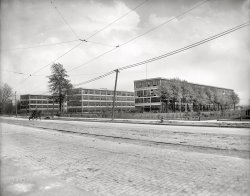
- Bonus Army: 1932
- ...
Bonus Army of 1932: Life Without a Safety Net
Chalmers M. Roberts
Fifty years ago today the ragtag "bonus army" of ... Posted by Dave - 07/31/2011 - 7:49pm -
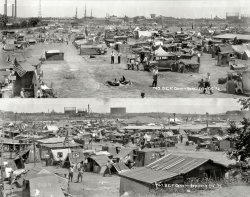
- Crosswise: 1902
- ... In Boston in 1888, when she was 35 years old, she married Chalmers Payson Longley, who was 61 years old. By 1898 they were living in ... Avenue Southeast (now a commercial office building).
Chalmers was born in Hawley, Massachusetts in 1827. His first wife, Maria ... Posted by Dave - 10/18/2019 - 7:33pm -
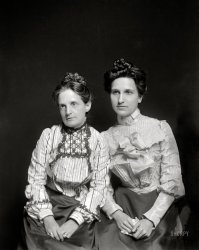
- Urban Alligator: 1921
- San Francisco circa 1921. "Chalmers Six touring car." Fitted with a reptilian custom top. 5x7 glass ... View full size.
New model Maybe it's a Snake Chalmers.
(The Gallery, Cars, Trucks, Buses, Chris Helin, San Francisco) ... Posted by Dave - 08/04/2017 - 11:06am -
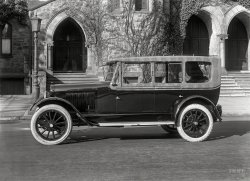
- California Girls: 1919
- San Francisco or thereabouts circa 1919. "Chalmers touring car." At what seems to be a deluxe cow barn. 6½ x 8½ Wyland ... Posted by Dave - 12/04/2014 - 11:49am -
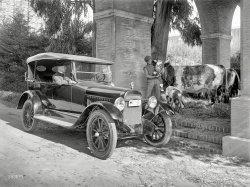
- And Step On It: 1917
- San Francisco circa 1917. "Chalmers town car." The ideal conveyance for European nobility, effete ... Posted by Dave - 05/17/2016 - 8:27pm -
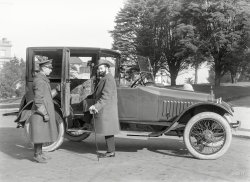
- Sleeps Two: 1920
- San Francisco circa 1920. "Chalmers touring car on Eddy Street." Equipped with what seems to be a bed. 5x7 ... Posted by Dave - 10/09/2014 - 6:02pm -
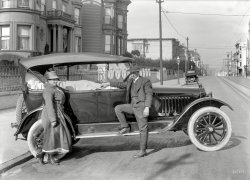
- Turbine Hall: 1930
- ... three by Westinghouse. - Dave]
AC Turbines Allis Chalmers, that is.
The generators were GE and Westinghouse as Dave ... Posted by Dave - 05/10/2016 - 7:38pm -
![Turbine Hall: 1930 Maryland circa 1930. "Conowingo Hydroelectric Plant. Turbine hall, seven turbines in Line II." 8x10 nitrate negative by Theodor Horydczak. View full size.
AMERICAN industrail craftsmanship at it's finestA standout in the modern world of plastic, precast concrete and particle board. And still generating clean and green power in 2016.
[Back when we could spell! - Dave]
Turbine Failures?Odd that there are two versions of turbine mixed in this row of seven.
The first, fourth, and fifth turbines have a rounded top on the exciter, more ventilating holes, and much beefier 6 legged bases. The other four have flat topped exciters and lower eight legged bases. The general design looks like all seven are from the same manufacturer, but built at different times.
[Four were built by General Electric and three by Westinghouse. - Dave]
AC TurbinesAllis Chalmers, that is.
The generators were GE and Westinghouse as Dave states. All seven turbines were manufactured by A.C.
http://www.michaelgatti.com/photos/2013/conowingo_dam/pages/page_19.html
Dam Good Fishing Spot
Conowingo Dam was one of my father's and uncles' favorite fishing spots. It always started early in the morn way before sunup since it was an accepted fact you had to be at your spot when the fish woke up for breakfast.
The dam was about an hour north of our Baltimore home and I was always happy to go there not just for the fishing but the thrill of riding over the dam and the mighty Susquehanna River.
The fishing was usually good (perch, small mouth bass, shad and rockfish) but I was always impressed by the huge mass of concrete upriver and the enormous floodgates.
I always hoped to see them open at once as seen in the pic below but the most I ever saw was one open gate.
(The Gallery, Industry & Public Works, Theodor Horydczak)](https://www.shorpy.com/files/images/SHORPY-5a48368u.thumbnail.jpg)
- Open and Shut: 1921
- San Francisco circa 1921. "Chalmers touring car at Lurline Baths, Bush side of Bush and Larkin." An open ... Posted by Dave - 01/31/2017 - 10:58am -
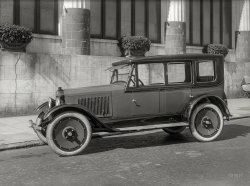
- Sound Your Sparton: 1918
- California in 1918. "Chalmers touring car on dunes." Along with a reminder from the Sparton ... Posted by Dave - 01/12/2015 - 5:30pm -
![Sound Your Sparton: 1918 California in 1918. "Chalmers touring car on dunes." Along with a reminder from the Sparton auto-accessories company to sound your horn -- branding disguised as a safety message. 5x7 glass negative by Christopher Helin. View full size.
Sparks-WithingtonSparks-Withington Corp. made its Sparton-brand "Motor Horns" in Jackson, Michigan. More here and here.
[In 2009 Sparton Corp. moved its headquarters to Illinois, and its manufacturing to Florida and Vietnam. Two years later, its abandoned plant in Jackson was torched by a teenage arsonist and burned to the ground. - Dave]
Choose Your Auto Accessories Wisely!Those sounding a Klaxon are ineluctably doomed to perish in a flaming motor wreck.
DownhillThose old mechanical brakes SLOW YOU DOWN until you stop. We have a '24 Model T coupe that my wife refuses to drive because she insists on having a car with BRAKES!!! (The horn works sooooo---, you really don't need BOTH)
(The Gallery, Cars, Trucks, Buses, Chris Helin, San Francisco)](https://www.shorpy.com/files/images/SHORPY-191-01A.thumbnail.jpg)
- Petit Hearse: 1919
- San Francisco circa 1919. "Chalmers touring car at Golden Gate Park." Fitted with a funereally swagged ... Posted by Dave - 07/23/2017 - 5:26pm -
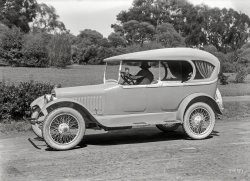
- Rim Shot: 1920
- San Francisco circa 1920. "Chalmers (rear detail)." Today's entry in the Shorpy Catalogue of Callipygian ... Posted by Dave - 09/14/2017 - 10:36am -
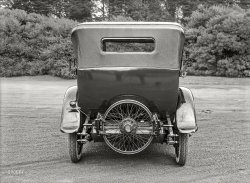
- Future Farmer: 1939
- ... so I had to do some digging.
It appears to be an Allis Chalmers WC series tractor. The stamped end of the fuel tank makes this an ... Posted by Dave - 12/24/2017 - 10:43am -
![Future Farmer: 1939 September 1939. "Bud Kimberley, a future farmer of America, driving a tractor. Jasper County, Iowa." The brother of Margaret, seen here yesterday. Photo by Arthur Rothstein for the Farm Security Administration. View full size.
No Comments Yet?Don't tell me I'm the first to comment about a young Paul Newman driving that tractor?
Keeping up with the KimberleysMargaret Lou's two brothers, James and Howard, outlasted World War II. Generations of the extended Kimberley family included owners of at least six farmsteads in northwestern Jasper County and southeastern Story County, small-town bankers, county and state agricultural agents, and many others. According to a 2016 Des Moines Register story, Kimberley Farms Co. now owns or rents over 4,000 acres in Jasper, Story and Polk Counties. One of its farms has been visited twice by Chinese President Xi Jinping, who announced plans to use it as the model for a demonstration farm in Hebei province.
James Bud Kimberley 1922-1993December 25, 1922 to Feb. 3, 1993.
James Bud Kimberley of Collins, Iowa, died age 70 of a heart attack at his home in rural Collins.
He was born to John B. and Carrie (Dunlap) Kimberley at Collins. He was a lifelong resident in the Collins area, graduating from Collins High School and attending Iowa State University for one year. He married Alta Harris on Nov. 21, 1942, at the Little Brown Church at Nashua. He was a self-employed as a farmer. He was a member of the Collins United Methodist Church and was a Mason.
Survivors include his wife, Alta, of Collins: his three daughters, Nancy Smith and Jean Nielsen, both of Chicago, and Kerry Funke of Norwalk; five grandchildren; and two sisters, Margaret Fisher of Twin Lakes and Blanche Bodie of Knoxville.
A-C WCThere isn't much shown of the tractor Bud is driving - so I had to do some digging.
It appears to be an Allis Chalmers WC series tractor. The stamped end of the fuel tank makes this an earlier model; later versions of the tractor had rounded tanks.
[Below, more of Bud and his tractor. - Dave]
(The Gallery, Agriculture, Arthur Rothstein)](https://www.shorpy.com/files/images/SHORPY-8b18317a.thumbnail.jpg)
- Sweet Chariot: 1920
- San Francisco circa 1920. "Chalmers touring car." Wearing a spiffy "California top." 5x7 inch glass ... Posted by Dave - 06/27/2015 - 2:24pm -
![Sweet Chariot: 1920 San Francisco circa 1920. "Chalmers touring car." Wearing a spiffy "California top." 5x7 inch glass negative by Christopher Helin. View full size.
Detachable top?Looks like a detachable top with an eisenglass window on each side.
["The California top ... can be stowed or removed quickly and has a permanent roof and glass windows" says this period article. -tterrace]
LocationTaken on the 2100 block of Washington Street, north side; not sure of the exact address. The house has been somewhat altered, and is currently obscured by a tall hedge.
[The house is the Phelan Mansion at 2150 Washington. - Dave]
(The Gallery, Cars, Trucks, Buses, Chris Helin, San Francisco)](https://www.shorpy.com/files/images/SHORPY-351-01.thumbnail.jpg)
- Dry Roller: 1920
- San Francisco circa 1920. "Chalmers touring car at Spreckels Mansion, N.E. corner Octavia & Washington ... Posted by Dave - 04/09/2017 - 5:32pm -
